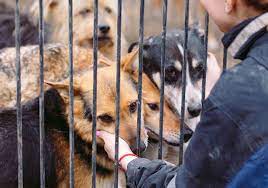Dog training and behavior refer to the techniques and methods used to teach dogs how to behave in various situations and environments, as well as to modify any undesirable behaviors.
Dogs are one of the most popular pets in the world and are considered to be man’s best friend. Training and behavior play a crucial role in building a positive relationship between dogs and their owners. By providing the right training, dogs can learn to behave properly and live happily in their human families.
Training helps dogs understand what is expected of them, enhances their obedience and social skills, and strengthens the bond between dogs and their owners.
Good behavior in dogs can include things like walking on a leash, following commands, responding to cues, being well-behaved around other dogs and people, and more.

On the other hand, undesirable behaviors can include excessive barking, digging, chewing, jumping up on people, and aggression, among others. Dog training and behavior modification can help address these issues and promote good behavior in dogs.
Table of Contents
ToggleBehavior Training v. Obedience Training
Dog behavior training and obedience training are two distinct types of training that aim to improve different aspects of a dog’s behavior.
Behavior training focuses on correcting problem behaviors such as aggression, fear, anxiety, and destructive tendencies. The goal of behavior training is to modify the dog’s underlying emotions and thought processes that cause the problematic behavior. This type of training typically involves working with a professional dog trainer who can assess the individual dog’s behavior and create a customized training plan.
Obedience training, on the other hand, focuses on teaching a dog specific commands such as “sit,” “stay,” and “come.”
The goal of obedience training is to make the dog more responsive to commands and improve its overall obedience and respect for its owner. This type of training can be done in a group class setting or one-on-one with a professional dog trainer.
Both behavior training and obedience training can greatly improve a dog’s quality of life and enhance its relationship with its owner.
However, it is important to understand the difference between the two and choose the type of training that best addresses the specific needs of the dog and its owner.
Conclusion
In conclusion, training and behavior are essential components in a dog’s life, and it is the owner’s responsibility to provide them with the necessary education and care.
With the right approach, dogs can become well-behaved, happy members of the family. By investing time and effort in their training and behavior, owners can enjoy a wonderful bond with their four-legged friends.









![The Ultimate Guide to Road Tripping with Your Dog [2025 Update]](https://bellabeanupdate.com/wp-content/uploads/2025/05/pexels-photo-1143369-300x209.jpeg)




















